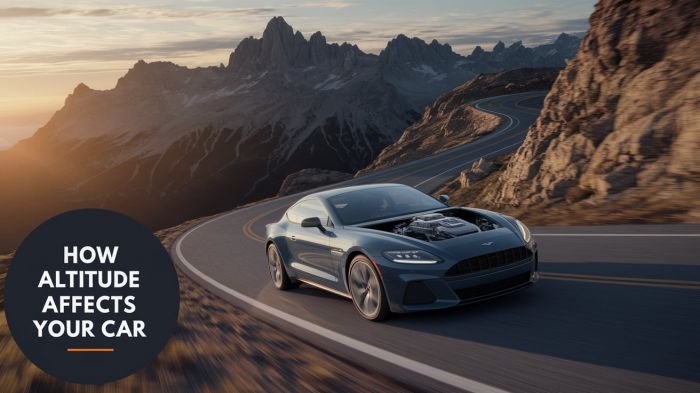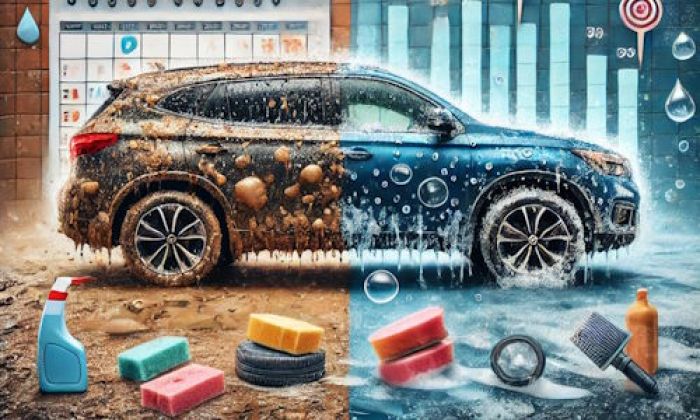The Can-Am Maverick is one of the most popular, versatile, and advanced sports side-by-side utility vehicles in the market. These off-road monsters are strong, durable, and well-suitable for all terrains. Whether you prefer the Trail, Sport, or X3, the Can-Am Maverick family has the perfect model to fit your personal needs.
As for making it your own, the customizability of the Can-Am Maverick is truly endless for all series/models. Customers have a variety of choices when it comes to personalizing and upgrading their vehicles for an even more adrenaline rush experience.

It is totally up to you if you want a beginner-friendly recreational vehicle or the fastest beast in the game to help you tackle the roughest paths.
The Can-Am Maverick has a collection of UTVs that are undoubtedly built to handle it all. However, these high-performing side-by-side utility vehicles are far from being flawless. Here are some common problems a Can-Am Maverick owner may encounter, along with some helpful tips and fixing knowledge to solve them.
Engine Overheating Problem
It really doesn't matter if you ride in a hot climate or a cooler environment, the Can-Am Maverick engine can easily overheat. While these powerful vehicles ride through some of the toughest terrains, their engine can overheat regardless of the outside temperatures. Most would agree that being in the 3 to 4 bars range is very normal for these monstrous machines.
However, if you notice your machine staying in the mid-five bar range or even overheating while idling, you may have an engine overheating issue at hand. Sure, you can go for a band-aid solution like getting a thermostat delete kit or even heat shields.
Still, it is always better to get to the root of the problem to avoid future recurrences and further damage.
Making sure the radiator is clean and in working order can be the key to keeping your Can-Am Maverick's engine cool and at a normal temperature. So, if the UTV is overheating and the engine cooling simply isn't cutting it, a high PSI cleaning of the radiator fins can do the trick.
Radiators blocked or clogged up with crud are sure to make the most advanced cooling system fail and cause the engine to overheat.
Also, having air bubbles in the radiator system can prevent proper cooling of the engine. Therefore, it may be necessary to "burp" the cooling lines and get rid of any air trapped inside. If you suspect any built-up deposits within the coolant lines, you can put new engine ice (cooling fluid) or run CLR (calcium, lime, and rust remover) through the cooling system.
The temperature sensors and water pump should be on the checklist as well when it comes to overheating issues. If the sensors are off, the machine's computer has no way to know that the engine is running too hot. Furthermore, with a malfunctioning water pump impeller, the fluids will not get a chance to circulate properly to keep the engine cool.
There is also an option to reflash your Maverick's electronic control unit (ECU) to assist with the overheating problems. Reflashing the ECU allows the computer to instruct the radiator fan to turn on at a lower temperature.
So instead of the fan waiting to turn on around 5 bars, the ECU reflash will get the radiator fan to automatically come on around 3 bars.
Ensuring consistent Can-Am Maverick engine cooling can be tough with clay and mud being the bane of all radiators. Therefore, sometimes it may be easier to just bite the bullet and simply relocate the actual radiator or even add a second one for extra support. Adding specialized mudding radiators can be helpful, but relocating the radiator to the back or top of the vehicle is ultimately the best solution to keep it clean and mud free.
Engine overheating is a problem that should never be ignored and can cause disastrous damage to the engine. Although there are some heat-related temporary remedies, not getting to the bottom of the actual problem may end up costing you an engine. It is much easier and cheaper to get a grip on the overheating issues at an early stage and figure out a proper solution.
Radius Rods and Radius Rod Plate
The Can-Am Maverick comes with radius rods and plates are just not that strong nor capable of clearing the wheel assembly of the vehicle. The radius rods and plates not being durable enough to handle some friction on rough terrains can be a great pain in the neck. Especially when you are tearing through trials with the power and strength of a UTV from the Maverick sports or X3 series.
As a driver of such a dominant and forceful vehicle, you would expect to run right through or over most obstacles in your way. However, the radius rods in these vehicles are somewhat frail and can easily give in. So instead of clearing something on your path with ease, you may be forced to stop or even end up with bent or damaged radius rods.
The radius rod plate also has an effect on the radius rods and the radius rod bolts during a ride. The radius rod plate has too much flexibility and puts excessive pressure on the rods and radius rod bolts while making quick or fast turns. The increased movement and force can become too much to handle for the rods and eventually cave into the pressure.
The best solution for this problem is to replace the stock radius rods and rod plates. You will find much stronger High Clearance Radius Rods and more durable rod plates available in the aftermarket. Most also recommend adding two more inches to your ground clearance for better reliability and a smoother riding experience.
Alternator Problems
The factory-installed alternators can only handle so much and are very likely to malfunction on your Can-Am Maverick. These alternators are not originally made to be able to take on all of the additional electrical parts on our vehicles. With the stereos, music systems, extra lights, and so on, the alternator simply cannot dish out enough power.
The voltage being unstable and irregular is one of the first signs of your alternator failing. Due to the power going up and down, you will notice the lights in your Can-Am Maverick flickering. Your headlights may go back and forth from being too dim to excessively bright.
When the alternator is overworked, it will try to send too much current down the wires. That will eventually cause them to overheat and end up frying the cables. As a result, you will be able to smell a burning stench that is somewhat similar to an electrical fire.
The best way to protect your wires and have your electrical equipment working properly is to upgrade your alternator. It is very common to experience voltage problems with your Can-Am Maverick due to insufficient alternators. You can very easily use an alternator kit to help boost the voltage in your vehicle.
Problems with the Front and Rear Knuckles
Although the company claims that the front and rear knuckles are lab tested and meet the standard, most owners and riders of the Can-Am Maverick (especially X3) will disagree. The front knuckles on these UTVs come with a 17,000 lbs capacity, which is just not enough for these types of vehicles. So when you are hauling down the trail with a monstrous machine like the X3, it can become quite difficult to stay within the limits.
Furthermore, the OEM knuckles seem to have a wheel-bearing issue that adds more to the problem. Increasing the overall capacity of the Maverick by upgrading the front and rear knuckles is the best solution in this situation. This will allow you to take on more force while preventing the middle rod of the radius from easily bending.
Replacing and upgrading the front and rear knuckles on your Maverick will add to the force your side-by-side UTV needs to live up to its reputation. The upgraded rear knuckles will get your capacity up to 72,000 lbs while the front knuckles come with lab-tested 86,000 lbs. The Maverick is a UTV meant to tackle the toughest terrains, so it is important the front and rear knuckles are up to the mark.
Low ground clearance/Poor tires and suspension
Many people appreciate the Can-Am Maverick side-by-side UTVs for having a variety of different models to suit individual needs. The Sport and X3 are no doubt the bad boys of the bunch. These UTVs come with enough power and force to bash through almost any obstacles in their way.
However, the Can-Am Maverick Trail on the other hand is a small and easy-to-use UTV. They are the cheapest models in the series and are designed to be beginner-friendly vehicles. The Trail series is meant more for cruising and going on family-type adventures in more manageable territories.
So, taking the Can-Am Maverick Trail on a rough or rocky path can get frustrating. Along with low ground clearance, they also have very cheap tires and poor suspensions made out of plastics instead of metal or rubber. Therefore, you will not only experience an excessively bumpy ride but also have difficulties getting over large obstacles and crossing over rougher terrains.
The Trail is simply not sturdy and durable enough to handle extremely rough trails. Therefore, the best solution, in this case, is to just try to avoid rough and rocky territories and enjoy the easy handling of the small UTV on smoother grounds. Nonetheless, the Can-Am Maverick vehicle has an upgrade option for almost anything.
If you insist on pushing the limit on the Can-Am Maverick Trail, you can replace the tires with new rubber or metal-made ones for better suspension. Using Anti-Roll Bars, Sway Bars or Strut Tower Braces can help solve the poor suspension problem as well. Furthermore, upgrading to Can-Am Trail High Clearance suspension can add 1.5 inches of ground clearance to your UTV.
Conclusion
Most of us choose side-by-side UTVs such as the Can-Am Mavericks to be able to dominate and rule the grounds we ride on. These vehicles are extremely high-performing, powerful, and offer the best ride of our lives. The Can-Am Maverick UTVs are durable enough to survive some of the roughest rides on the toughest terrains you can imagine.
However, these champions of the rocks, dirt, and dunes are not perfect and have their flaws. The good news is that most Can-Am Maverick issues are easily manageable with some replacements and upgrades. While some upgrades may be more costly than others, the options are definitely there for your pickings.
About the authors
The CarAraC research team is composed of seasoned auto mechanics and automotive industry professionals, including individuals with advanced degrees and certifications in their field. Our team members boast prestigious credentials, reflecting their extensive knowledge and skills. These qualifications include: IMI: Institute of the Motor Industry, ASE-Certified Master Automobile Technicians; Coventry University, Graduate of MA in Automotive Journalism; Politecnico di Torino, Italy, MS Automotive Engineering; Ss. Cyril and Methodius University in Skopje, Mechanical University in Skopje; TOC Automotive College; DHA Suffa University, Department of Mechanical Engineering






Add comment